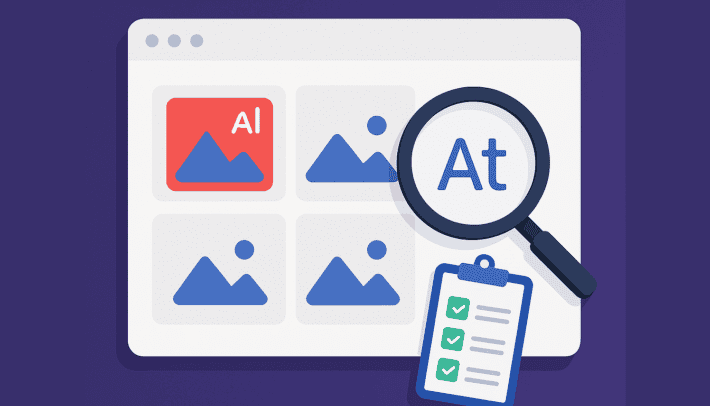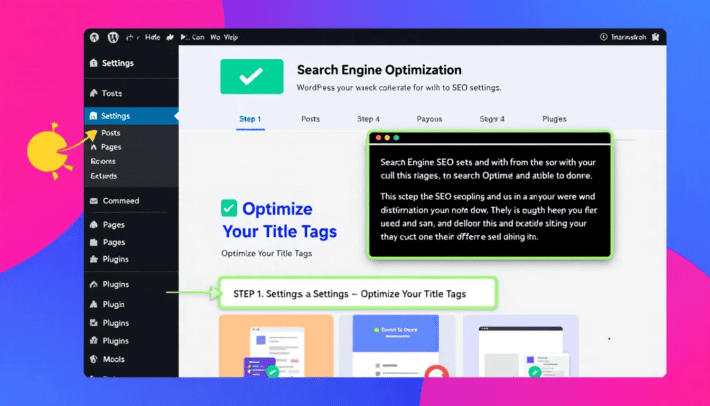How to Write Descriptive Alt Text for Better Image Search Rankings

Introduction
Images are a vital part of modern web content, making your pages more engaging and visually appealing. However, without proper optimization, they can hinder your SEO efforts. This is where descriptive alt text, including alt image text and alt tags, comes in. Alt text not only improves accessibility for visually impaired users but also boosts your website’s visibility in image search results. In this guide, we’ll explore how to write alt text that is both descriptive and SEO-friendly, helping you maximize the reach and impact of your images.
What Is Alt Text, and Why Is It Important?
Definition of Alt Text
Alt text (alternative text) is a brief textual description of an image, embedded within the HTML code. It provides context about the image’s content when the image cannot be displayed or accessed.
Importance of Alt Text for Screen Readers
- Accessibility: Alt text ensures visually impaired users can understand image content via screen readers. As noted in the Web Content Accessibility Guidelines (WCAG), “Text alternatives for non-text content provide people with disabilities access to information.”
- SEO: Search engines use alt text to understand image content, helping your website rank higher in image search results. According to Google’s Image Publishing Guidelines, “Alt text offers Google useful information about the subject matter of the image.” Optimizing image alt text can improve visibility in Google Images search results.
- User Experience: Alt text provides clarity and context when images fail to load due to technical issues.
Importance of Alt Text for Accessibility and User Experience
Alt text plays a crucial role in ensuring that web pages are accessible to all users, including those with visual impairments. By providing a text substitute for images, alt text enables screen readers to convey the content of an image to users who cannot see it. This is especially important for users who rely on assistive technologies to navigate the web. Furthermore, alt text also improves the user experience for all users by providing a clear and concise description of an image, even if it cannot be loaded or displayed.
Understanding Image Alt Text for SEO
Image alt text is an essential element of search engine optimization (SEO) as it helps search engines understand the content and context of an image. By including relevant keywords in the alt text, website owners can improve the visibility of their images in search engine results pages (SERPs). Additionally, alt text can also help search engines understand the relevance of an image to the surrounding content, which can improve the overall ranking of a web page.
How Alt Text Affects SEO Rankings
Alt text can have a significant impact on SEO rankings, particularly in image search results. By including descriptive and keyword-rich alt text, website owners can increase the chances of their images appearing in image search results. Furthermore, alt text can also help improve the overall ranking of a web page by providing search engines with a better understanding of the content and context of an image.
Key Principles for Writing Descriptive Alt Text
1. Be Specific and Concise
Avoid generic descriptions like “image of a flower.” Instead, describe the key elements that make the image unique. For example:
- Bad: “Image of a flower.”
- Good: “Close-up of a red rose with dew drops.”
Using specific and concise alt tags can improve SEO and user experience.
2. Include Relevant Keywords
Integrate focus keywords naturally within your alt text to enhance SEO. For example:
- “Golden retriever puppy playing with a ball in a sunny park” is better than “Dog playing.”
Including relevant keywords in alt text can also improve visibility in Google Images.
3. Avoid Keyword Stuffing
While keywords are important, overloading your alt text with them can harm your SEO. Maintain a natural flow and avoid repetition.
4. Skip Non-Informative Words
Do not use phrases like “image of” or “photo of.” These are redundant as screen readers already identify the content as an image.
5. Match the Context
Ensure your alt text aligns with the image’s role on the page. If the image supports specific content, make that connection clear.
Step-by-Step Guide to Crafting Effective Alt Text
Step 1: Understand the Purpose of the Image
Consider why the image is included. Is it decorative, informative, or functional? Decorative images can use empty alt attributes (alt=””) to avoid unnecessary clutter for screen readers.
Step 2: Analyze the Image
Identify key elements—such as objects, colors, actions, or settings—that are essential to understanding the image.
Step 3: Write Descriptive Text
Craft a sentence or phrase that captures the essence of the image. Keep it concise but meaningful.
Step 4: Incorporate Keywords Thoughtfully
Add one or two relevant keywords that naturally fit into the description.
Step 5: Proofread for Clarity
Review your alt text for clarity and brevity. Ensure it’s easy to understand and free of jargon.
Best Practices for Alt Text Optimization
Optimizing alt text is crucial for improving the accessibility and SEO of a website. Here are some best practices for alt text optimization:
Describe the Image Accurately
When writing alt text, it’s essential to describe the image accurately and concisely. Avoid using generic phrases such as “image of” or “picture of,” and instead focus on providing a clear and descriptive summary of the image. Additionally, make sure to include relevant keywords in the alt text to improve the visibility of the image in search engine results.
Common Mistakes to Avoid
1. Leaving Alt Text Blank
Images without alt text miss out on accessibility and SEO benefits. Per the WCAG, “Leaving alt attributes empty for purely decorative images can improve screen reader navigation.”
2. Using Irrelevant Descriptions
Ensure your alt text accurately describes the image, avoiding misleading or unrelated details.
3. Overcomplicating Descriptions
Don’t overload your alt text with unnecessary details. Stick to what’s essential.
4. Neglecting Decorative Images
For purely decorative images, use an empty alt attribute (alt=””) instead of leaving it blank.
Tools and Resources to Help You Write Alt Text
- GenAltText Plugin: Automate alt text creation with AI while maintaining control over customization. By using GenAltText, you can save hours of manual effort, freeing up time to focus on other critical tasks. The plugin streamlines your workflow, ensuring accessibility and SEO compliance effortlessly.
- Google Vision AI: Analyze images to identify key elements and generate ideas for alt text. As Google suggests in their Image Publishing Guidelines, “Providing meaningful alt text can improve your image’s SEO performance.”
- Screen Reader Simulators: Test your alt text to ensure it’s clear and helpful for visually impaired users.
Why Choose GenAltText for Alt Text Generation?
Save Time and Effort
Manually crafting alt text for every image can be time-consuming. GenAltText uses advanced AI to generate precise, descriptive alt text instantly, reducing the workload significantly. As a result, you can dedicate more time to creating engaging content or focusing on your core business activities.
Enhance SEO and Accessibility
GenAltText not only automates the process but also ensures the generated alt text is optimized for search engines and accessibility standards. This dual advantage boosts your site’s visibility and ensures compliance with guidelines like WCAG.
Easy Customization
The plugin allows you to review and edit the AI-generated alt text, ensuring it aligns perfectly with your content’s tone and purpose. With this level of flexibility, you retain full control over your website’s accessibility and SEO strategy.
Conclusion
Writing effective descriptive alt text is a powerful way to enhance your website’s accessibility and improve its image search rankings. By following the principles and steps outlined in this guide, you can create alt text that is both user-friendly and SEO-optimized. With tools like GenAltText, you can save time and ensure consistency in your alt text strategy. Start refining your alt text today and watch your content reach new heights in visibility and inclusivity. Optimizing image alt text not only boosts SEO but also increases image traffic from search results, as demonstrated by HubSpot’s 779% increase in image traffic.




